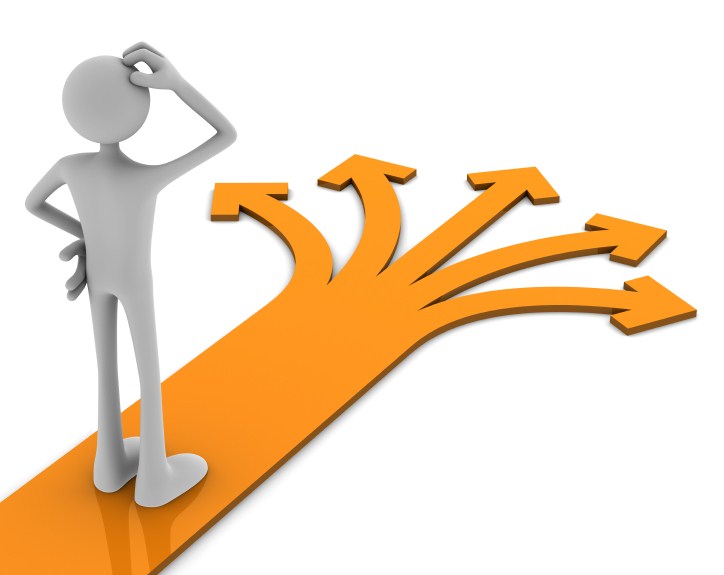It is important that we marketing researchers become like Behavioral economists and study how people make choices, not just the choices they make.
Choices often have three dimensions…what media to seek out for advice, what to buy, and what retailer to buy from. Each choice has its own path that are intertwined and critical to understand.
The fourth dimension to choice, one we researchers think of too infrequently, is the choice of the answer respondents give to a survey question. Survey-taking is chock full of decision-making because people are not opening their brain like it’s “a container” and just letting truthful answers pour out of their heads. They are reconstructing memories and opinions in the context of their current mental state, how the question is framed and asked, and how the preceding parts of the survey have brought a respondent to the next question.
The marketing side of studying choice processes
Nowhere is it more evident that we need to study how people make choices than shopper insights. It has been proven over and over again from in-aisle observation and eye tracking that shoppers consider only a small percent of the products available for sale in a category. The number of products considered, dwell time, whether the purchase is fun (like artisan cheeses) or functional (like American Cheese), is governed by the shopping style that people have with regard to that particular product category.
If we study the WAY that people decide and not just the decisions they make, marketers will gain new and powerful ways of influencing purchase outcomes. For example, what if we study not just what people eat for dinner but how they decide what to eat for dinner. This can take marketers down a different path. What percent of shoppers (and who) are seeking advice and ideas for dinner meal planning? What media do they go to for advice? Are they using an app? Are they going to their favorite website like allrecipes.com? Are they deciding in-store where the right digital and physical messaging would be influential? All of these become great opportunities for the right ad at the right time and the right content optimized to show up in search results against meaningful search phrases.
The marketing research side of studying choice
Respondents give different answers to the same questions asked or framed a little differently. For example, ask people which of the following brands they have bought in the past three months. You will get lower three month penetration levels that are closer to truth if you precede this question by asking which of the following brands they have bought in the past 6 months. This effect is called “telescoping” and asking the preceding question traps this effect, in other words, it changes the choice process of how to answer the three month question.
Marketing research needs to put a little behavioral economics into its game. Here are three smart steps to begin the process:
1. Nudge the Respondent
Nudge: Improving Decisions About Health, Wealth, and Happiness (2008), by Richard H. Thaler and Cass R. Sunstein, is all about the idea that there is no neutral way to frame choices: “…simply by rearranging the cafeteria, Carolyn was able to increase or decrease the consumption of many food items by as much as 25 percent. Carolyn knows she can increase consumption of healthy foods…” The conclusion: Carolyn is a choice architect and there is no such thing as a neutral design.
Take it to the next step: Aren’t research teams constructing surveys also choice architects? We need to nudge respondents to get most accurate self-reporting when compared to known behavioral data, like brand penetration levels.
2. Heat up the Respondent
We tend to study preferences at times that are divorced from a respondent being in a need state. Noted behavioral economist George Loewenstein describes his research on cold-hot empathy gaps as follows (Loewenstein, Read and Baumeister; 2003).
“…when people are in a cold state—i.e., not hungry, sexually aroused, in pain, angry, etc. —they underestimate the impact of such ‘visceral’ (hot) states on their own future behavior. “
Current concept testing does not do enough to “put people in the mood,” especially if the idea is innovative and might create its own category.
3. Create Social Contracts
Dan Ariely’s Predictably Irrational, Revised and Expanded Edition: The Hidden Forces That Shape Our Decisions (2009) raises an important insight about social vs. monetary contracts:
…they studied a day care center in Israel to determine whether imposing a fine on parents who arrived late to pick up their children was a useful deterrent… [they]concluded that the fine didn’t work well…Why? Before the fine was introduced, the teachers and parents had a social contract, with social norms about being late. Thus, if parents were late… their guilt compelled them to be more prompt in picking up their kids in the future. But once the fine was imposed …they frequently chose to be late.
The ARF Foundations of Quality Research program I helped to direct proved that those who are motivated by a social contract (i.e., “Giving my opinion is the right thing to do”) rather than receiving cash incentives led to more diligent survey taking behavior.
The challenge to producing consistent and reliable marketing data is only partly one of sample representativeness. Marketers and marketing researchers need to think more like behavioral economists.


Good news Joel. Marketing scientists have been studying how people make choices for a long while.
World leaders are here: http://www.censoc.uts.edu.au